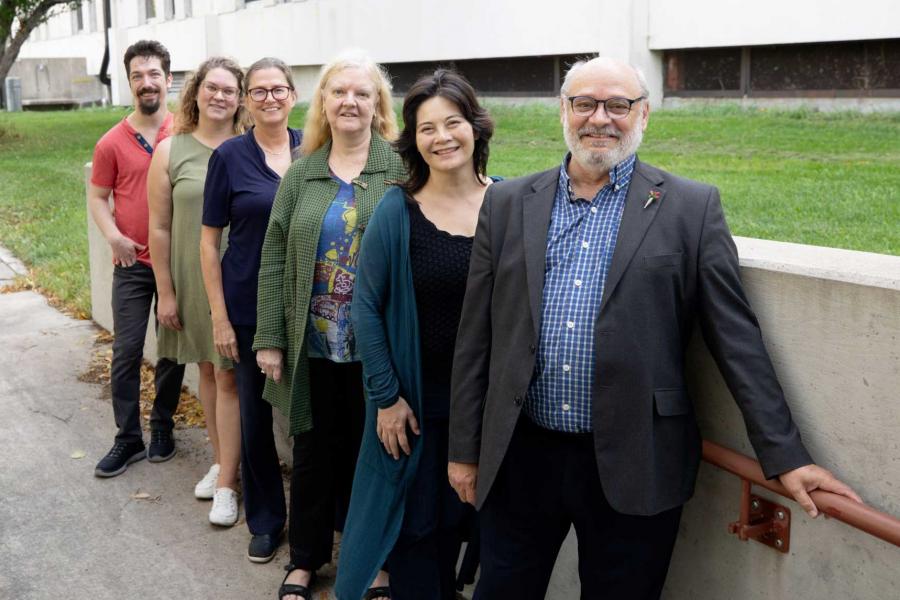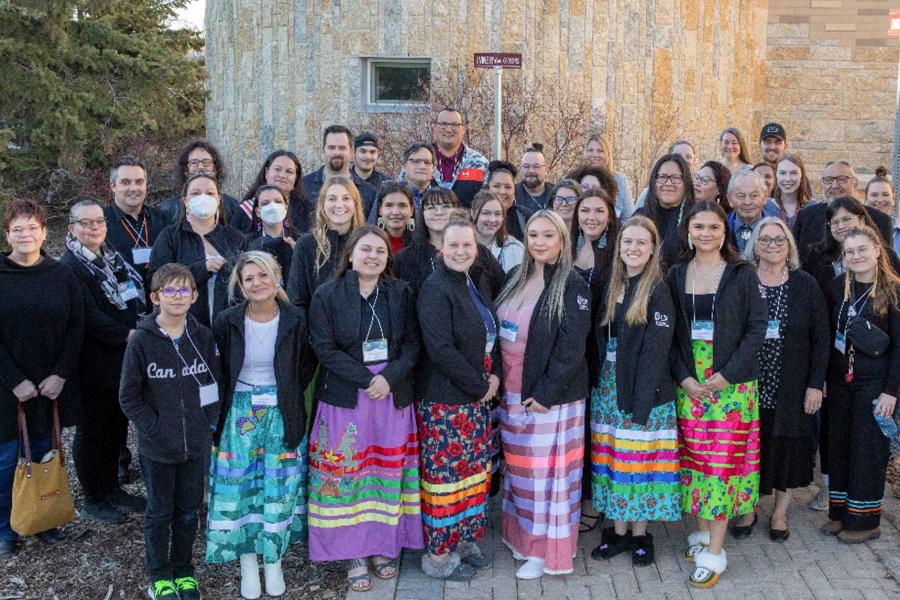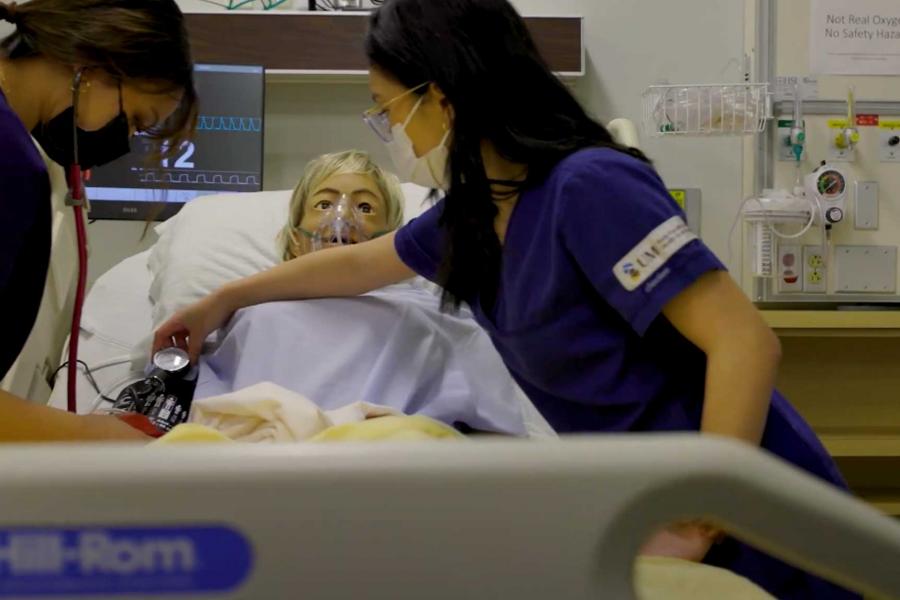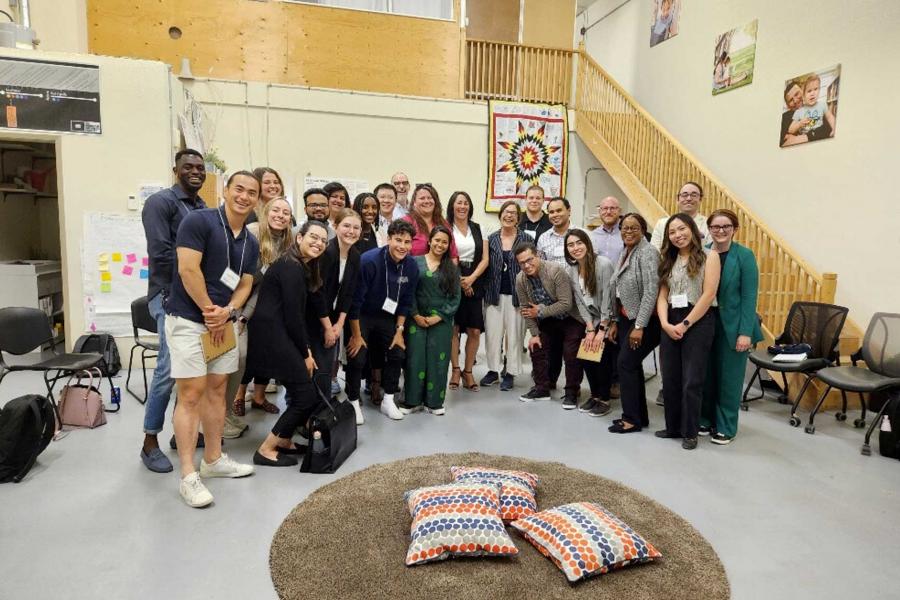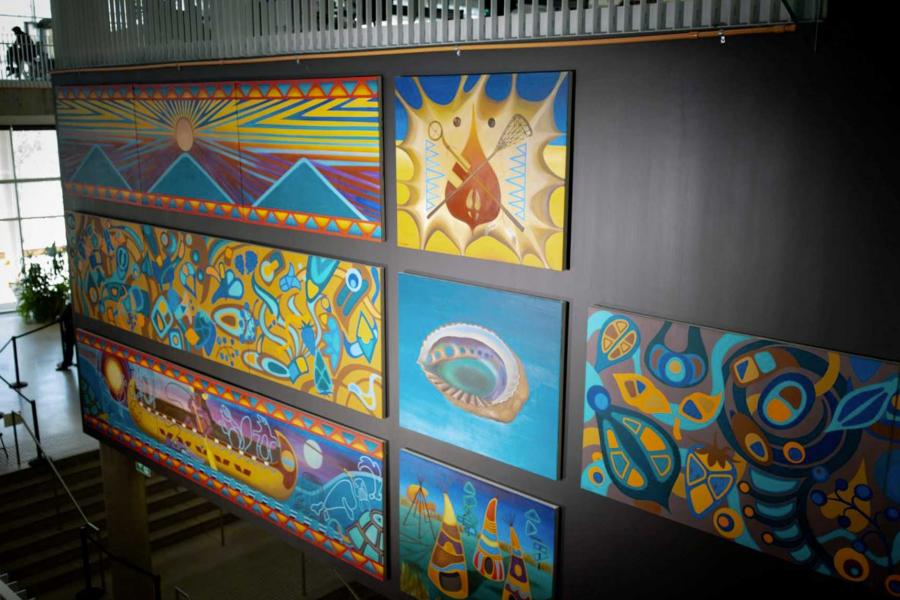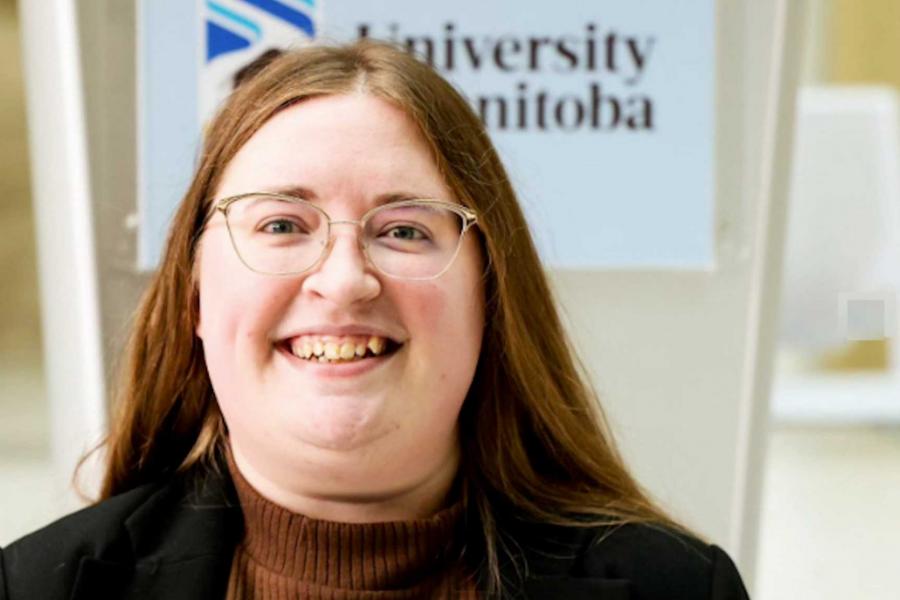
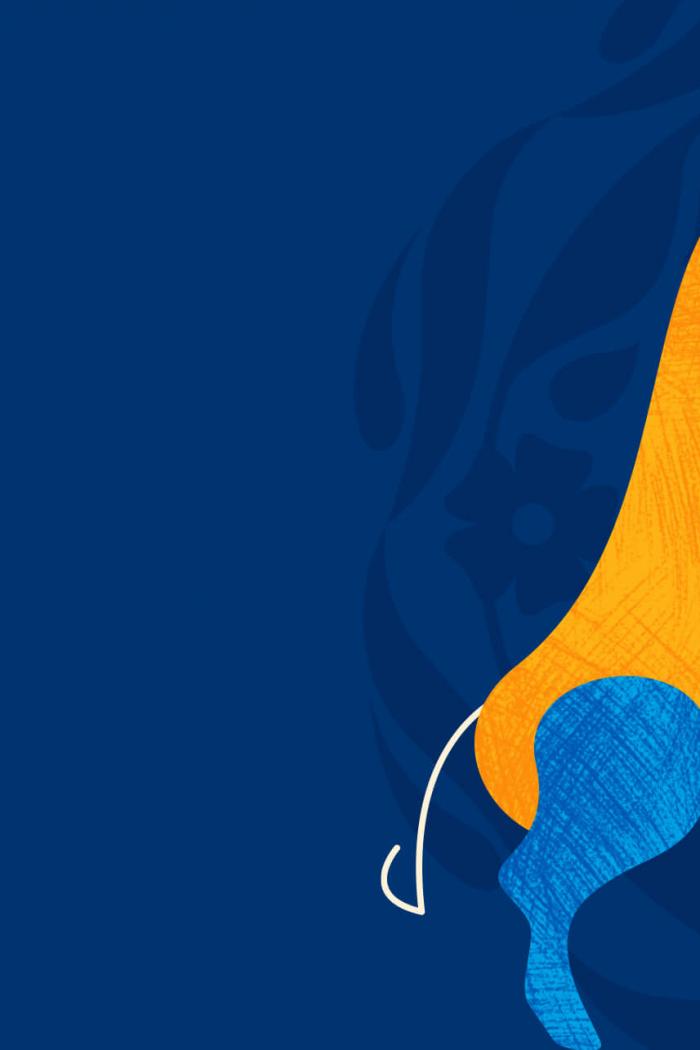
MomentUM: Leading Change Together
University of Manitoba Strategic Plan 2024 – 2029

Our plan to lead change together
Grounded in UM’s mission, vision and core values, and in the spirit of Reconciliation and collaboration, we will respectfully lead change and shape a brighter future for all.
Commitments
Guiding how we move forward together are our fundamental commitments to:
- Fostering a vibrant community
- Advancing Reconciliation for transformative change
- Building a sustainable future
Strategic themes
Over the next five years, we will work together to achieve our goals across three interconnected strategic themes:
- Creating knowledge that matters
- Empowering learners
- Reimagining engagement
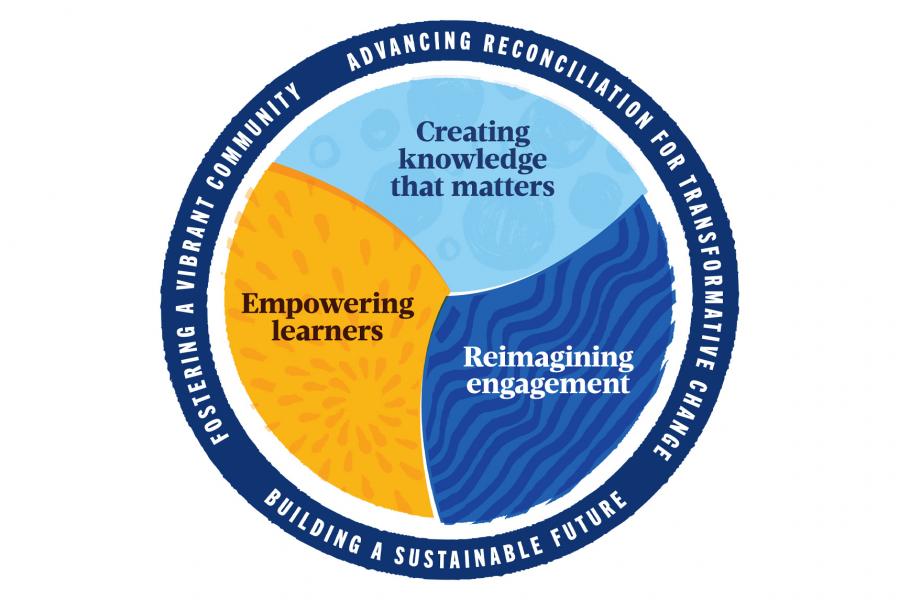
Creating knowledge that matters
In leading change, UM will demonstrate advancements in exceptional research, scholarship and creative activities to create knowledge that matters and that positively impacts the communities with whom we engage. UM will be increasingly sought out for our expertise and recognized for our contributions.
-
Creating knowledge
Goal:
Inspire knowledge creation by supporting and promoting an environment of excellence.
-
Creating knowledge
Goal:
Build reciprocal relationships with communities to anticipate and identify solutions to emerging societal, cultural, economic, health and environmental needs of Manitoba and beyond.
-
Creating knowledge
Goal:
Identify sustainable and high-impact solutions through increased collaboration and connection across our campuses.
Empowering learners
In leading change, UM will empower learners through learning experiences that meet the needs of an increasingly diverse student body. We will provide researchers, instructors, staff and learners with the knowledge, skills and supports they need to achieve their goals.
-
Empowering learners
Goal:
Respond to changing needs of learners through the creation and advancement of supportive systems for learning and success.
-
Empowering learners
Goal:
Build sustainable futures for learners by increasing opportunities for innovative and meaningful learning experiences.
-
Empowering learners
Goal:
Foster an exceptional student experience by strengthening teaching and student support services across the university.
Reimagining engagement
In leading change, UM will be a partner of choice with the greater community. We will be a destination to learn, create, work, and play. In reimagining engagement, we will connect and thrive as a community for today and tomorrow.
-
Reimagining engagement
Goal:
Strengthen and build mutually beneficial and reciprocal external relationships through meaningful and authentic engagement.
-
Reimagining engagement
Goal:
Empower staff, faculty, and students to thrive and succeed by creating a culture of belonging, well-being and inclusion.
-
Reimagining engagement
Goal:
Achieve sustainability and accessibility targets through community decision-making processes and institutional initiatives.
How we get there
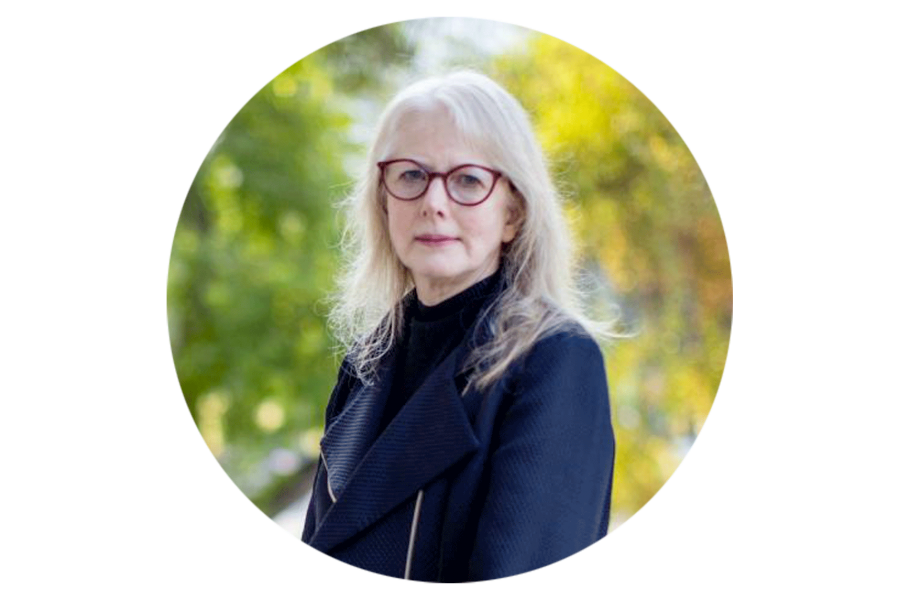
A shared vision
We're bringing the Strategic Plan to life with a campus mural. It begins with a bison, a symbol of our strength, determination and unity. But it’s not finished yet. We need your ideas, your vision for the future, to complete it.
In collaboration with the School of Art, we will be adding the UM community responses to the prompt “My UM will be…” to complete the mural.
Gaining MomentUM
Identifying the actions we need to take to meet the goals outlined in this plan is our next step in this process. Guided by our three fundamental commitments, these actions will support the three strategic themes that advance our mission and allow us to become a vibrant and thriving community, strengthened by Indigenous knowledges and perspectives, and leading change that makes meaningful impact in our province and wider world.
Together, we will use this framework to gain momentum and lead change to shape a brighter future for all.
Witness ceremony
To meaningfully action our new strategic plan, a Witness Ceremony was held at the MomentUM launch event. The term “witness” is a reference to the Indigenous principle of witnessing, which varies among First Nations, Métis and Inuit. Through witnessing by honoured and respected guests, the event or work that is undertaken is validated and provided legitimacy.
Four witnesses from the UM Indigenous community who represent Elders, faculty, students and staff will bring the MomentUM launch history back to their internal and external communities and inspire their peers to sew Reconciliation into discussions and actions as it has been woven into the strategic plan.
More information from the Witness Ceremony, including witness testimonials, will be shared in the coming days.


